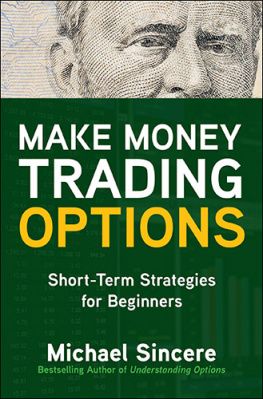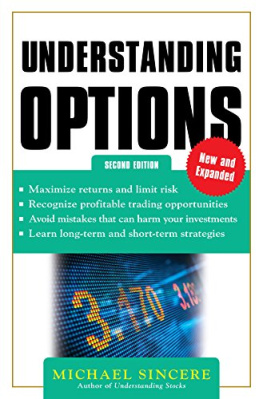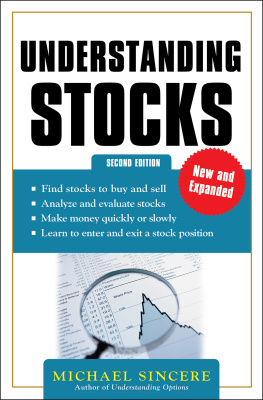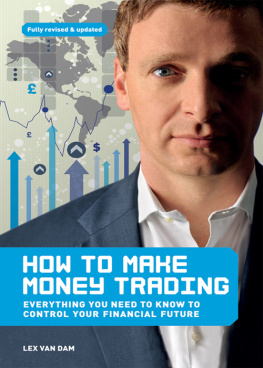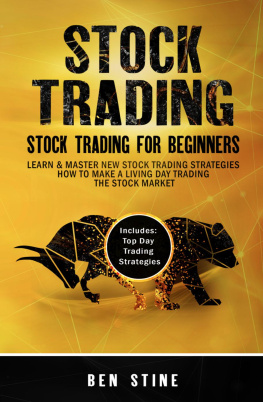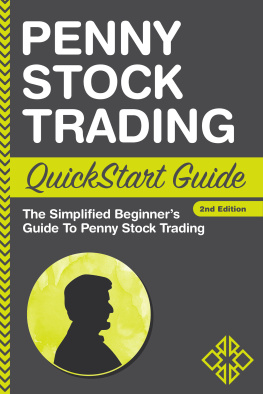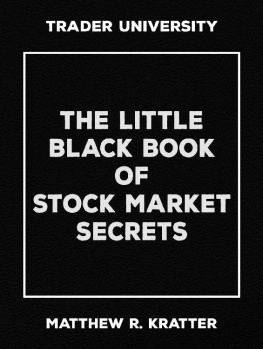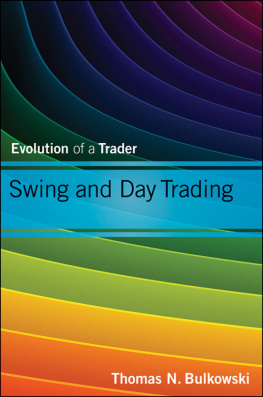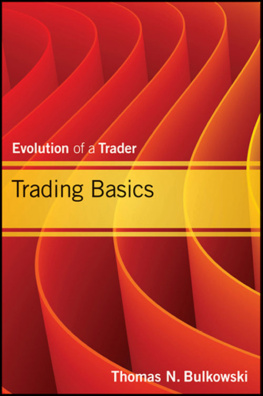If you enjoyed this book, discover your next great read with the following excerpt.
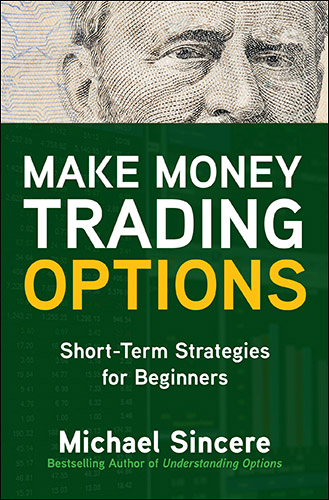
A Week in the Life of an Options Trader
Sam was a middle-aged retired teacher who had invested most of his money in an IRA account. He had 60 percent of his money in stocks and index funds and 40 percent invested in bonds. Sam wanted to find a way to increase his income while also having something to do. Retirement was already boring.
It was Sams young nephew who suggested that he consider trading options. His nephew was making big profits trading options from home, and he finally convinced Sam to try it out for himself.
Sam began by reading a book on trading options. Then he watched online videos on how to make money trading. After a few weeks of studying, Sam felt he was ready to trade with real money. He also spoke about options with his neighbor Bradley, who had been trading stocks and options for years. Bradley often shared his success stories.
After much thought, Sam decided to begin by purchasing calls and puts, one of the most basic options strategies. Sam didnt feel ready to try the complicated strategies his nephew used. He wanted to keep it simple.
Sam decided to trade using money in his IRA account because he wanted all taxes on his earnings to be deferred. He spoke to a representative at the brokerage firm to be certain that his trading would be allowed in a retirement account. The broker told Sam that buying calls and puts was allowed.
Sam told the broker to sell his stocks and mutual funds so he could trade options. I want to make a lot of money, Sam told the broker. Because Sam had almost $150,000 in his account, he was free to make as many trades as he liked, including trading daily, trading weekly, or holding even longer.
In reality, Sam had no idea how to choose an option or how long to hold a position. With stocks, he just bought and almost never sold. Maybe its different with options, he said to his broker.
It is very different, the broker said, nodding. Read this first. The broker handed him a thick brochure called Characteristics and Risks of Standardized Options.
When Sam arrived home, he put the brochure in a drawer with no plans to read it.
Monday Morning
On Monday morning, August 3, Sam was eager to make his first options trade. He set up his computer and two iPads for trading. Sam had no idea what he should buy, so he turned on the TV to a financial program to get stock ideas.
After watching for 20 minutes, he wrote down the names of stocks the touts on the program had recommended. The one stock that everyone on the show liked was Apple, which was reporting its quarterly earnings in two days.
Sam thought that buying Apple was a great idea. Apple was a successful company that Sam knew well. It seemed like a no-brainer: Buy call options on Apple before earnings were announced and make money when the stock price rose. It didnt hurt that Apple stock had been rising for weeks. I may as well join the party, he thought.
Sam had already opened his brokerage account and was ready to place an order to buy 10 calls on Apple at its current price. Anxious to get started, he had to wait until the options market opened at 9:30 a.m.
The futures market was pointing to a lower opening. It appeared as if the Dow was going to drop by almost 1 percent at the open, a 240-point fall. The Standard and Poors 500 index (S&P 500, or SPX) was also down by 1 percent. Sam was glad because he could buy his Apple calls at a lower price. Buy low, sell high was the number one rule that he had always been told.
Sam was also thinking that since the market was going to fall at the open, maybe he should take advantage of the market decline and buy puts on the indexes. He knew from reading that one way to make that bet is to buy puts on SPY, a popular ETF that tracked the S&P 500.
As soon as the market opened at 9:30 a.m. ET, Sam made his decision. He immediately placed a limit order to buy 10 Apple calls (September 18 at-the-money strike price). The bid and ask prices were $21.85 $22.40, and Sams limit price was $22.40. The total cost of the trade would be $22,400.
Sam thought it was a little expensive, but after all, Apple was an expensive stock. You have to pay to play, Sam thought. Sam figured that he wasnt the only one who wanted to buy Apple calls, which is why they were so expensive.
Sam knew from reading his trading books that his primary goal was not to lose money. That was why he bought only 10 Apple calls (at the money) even though he thought of buying more.
Im buying options on one of the most popular stocks in the world, Sam reminded himself.
Only minutes after the market opened, Apple bucked the market downtrend and moved up so quickly that Sams limit order wasnt immediately filled. That really annoyed Sam, as he expected to buy it for $22.40 per contract. He went back to the order screen and saw that the ask price for Apple had risen to $23.95. It was on its way higher because Apple, the underlying stock, was moving higher. The cost of call options increased as the stock price increased.
To make sure he got his order filled this time, Sam broke one of the rules he had read about in the books. The authors always said to only place a limit order, not a market order. But if he used a limit order, Sam thought, his order might not get filled immediately. He didnt want to miss out on buying these calls.
Sam ignored the advice from the books and placed a market order to buy 10 Apple calls (at the money). His order was filled at $24.65, the highest price of the day so far, but Sam was thankful he owned those calls. The cost was $24,650.
Ten minutes after he bought those options, Sam looked at his account and saw he was already up by $720. Wow, Sam thought. This is easy.
A few minutes later, the Dow began to falter. It was now down by 312 points, a 1.3 percent drop. The S&P 500 was down by almost 1.4 percent. Sam was annoyed that he didnt buy those SPY puts, which would have been profitable.
As the stock indexes moved lower, Sam felt nervous. When the Dow had fallen by 340 points, and the S&P 500 kept dropping, he was unable to stand it any longer. He placed a new order to buy 10 SPY puts (September at-the-money puts with a bid-ask price of $13.65 $13.69). This is expensive, Sam thought, but not as expensive as the Apple calls.
He was anxious to get his order filled, so he placed a market order to buy, even though he knew he should have placed a limit order. No time to waste, Sam thought to himself. Most important to Sam, if the market continued to fall, the puts would make money.
His order for the SPY puts was filled at $13.71. The total cost of the order was $13,710.
Sam had no comprehension of how options decayed on a daily basis, but he liked the idea of owning both puts and calls. The only problem was that his Apple calls were slowly falling lower with the market. It was annoying that he was now only up by $320 on the Apple calls. Fortunately, his SPY puts were up by $110.
Sam looked at his IRA account. He had spent almost $38,000 on only two positions.
While Sam wondered what to do next, his cell phone rang. His neighbor Bradley yelled into the phone: The markets going to crash! This is the big one!
How do you know? Sam asked.
I just know! Bradley snapped. I have never been more certain of anything in my life. Sell short, buy puts; this is a crash!
Ill think about it, Sam said, but Bradley had already hung up.
Sam considered Bradley as a know-it-all who bragged about how much money he had made in the market. Bradley often got emotional when the market made extreme moves, and sure enough, he was emotional.
Next page
